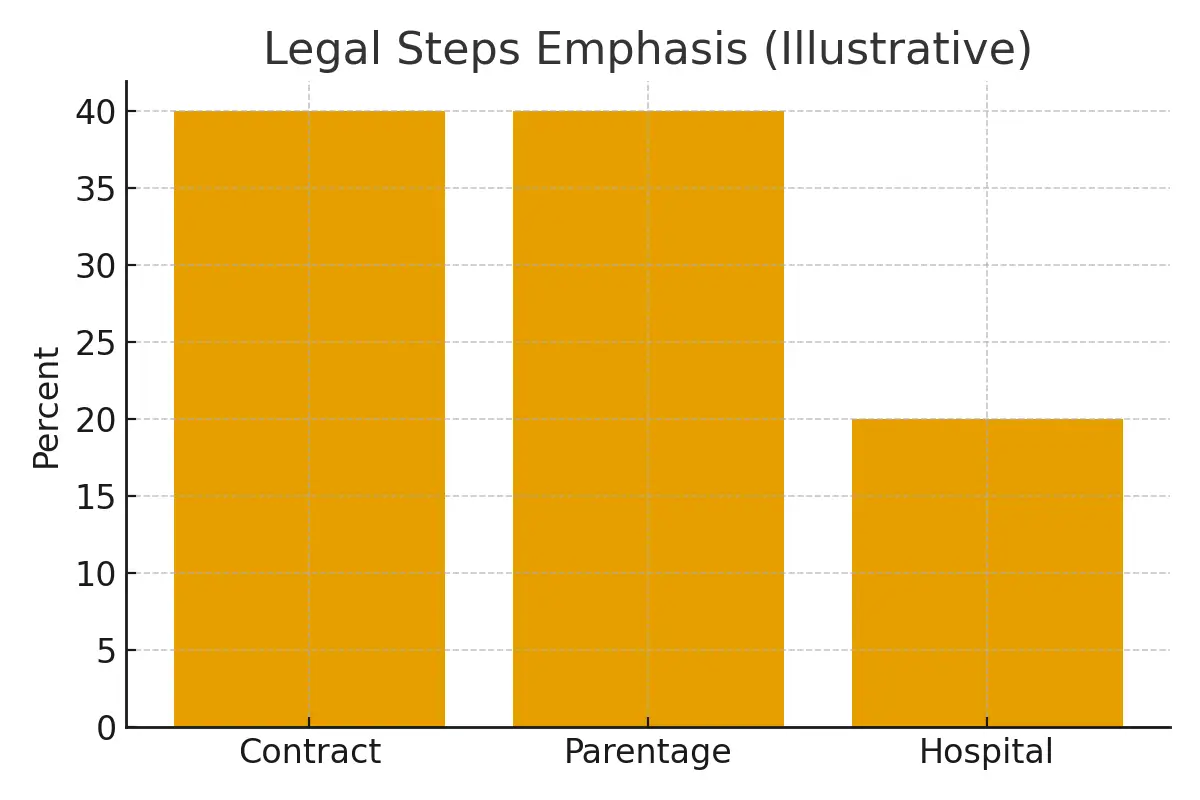
This article explains second-parent adoption and parentage orders within the LGBTQ+ family-building pathway. It highlights the decisions that truly impact outcomes, budgets, and timelines—so you can plan with clarity and confidence.
What It Is
Second-parent adoption and parentage orders—explained in plain English. We’ll cover where they fit in the family-building process, what they change legally and practically, and how early decisions affect downstream results.
Who It Helps
These legal pathways are especially relevant for LGBTQ+ parents who want to:
- Secure equal legal rights for both parents.
- Avoid gaps in recognition when crossing state or national borders.
- Reduce future legal risk around custody or decision-making.
Not every family needs the same approach. Factors like age, medical history, reproductive labs, imaging, and treatment response help determine the right fit.
Step-by-Step
A simple sequence with checkpoints to reduce stress and protect outcomes:
-
Choose your medical and legal teams early.
-
Align clinical treatment with legal timing.
-
File paperwork before or shortly after birth.
-
Complete court hearings or documentation for full recognition.
Pros & Cons
Pros:
- Full parental rights for both partners.
- Recognition across state lines and internationally.
- Stronger legal security for the child’s future.
Cons:
- Added legal fees and timelines.
- Variability in requirements by state/country.
- Possible emotional stress during the legal process.
Costs & Logistics
- Line items: attorney fees, court costs, document prep.
- Insurance: sometimes covers related procedures but rarely legal costs.
- Cash-flow: plan early to avoid last-minute stress.
- Tracking: use a simple checklist to prevent surprise bills.
What Improves Outcomes
- Insurance pre-authorizations: reduce delays and protect budgets.
- Embryo transfer scheduling: aligned with transparent planning reduces stress.
- Lab quality indicators: stabilize results and prevent variability.
- Carrier screening logistics: avoid late-stage setbacks.
- Legal documentation steps: ensure recognition without undermining timelines.
- Mental health support: strengthens resilience during the process.
Case Study
One couple began uncertain about whether second-parent adoption was necessary. With steady communication between clinic and legal teams, they chose a parentage order. The process brought clarity, synchronized treatment with legal filing, and avoided delays while protecting both parents’ rights.
Mistakes to Avoid
- Waiting until after birth to start paperwork.
- Assuming state recognition applies everywhere.
- Overlooking insurance pre-authorization for clinical steps.
- Skipping mental health or emotional support.
FAQs
Q. Do we need second-parent adoption if we’re both on the birth certificate?
Ans : In many states, yes—birth certificates don’t always hold up in court.
Q. How long does the process take?
Ans : Usually 3–6 months, but it varies by state and court schedule.
Q. What’s the cost range?
Ans : Typically $2,000–$5,000, depending on legal complexity and location.
Call To Action
- Free 15-min nurse consult
- Upload labs for review
- Personalized cost breakdown for your case
Related Links

Dr. Kulsoom Baloch
Dr. Kulsoom Baloch is a dedicated donor coordinator at Egg Donors, leveraging her extensive background in medicine and public health. She holds an MBBS from Ziauddin University, Pakistan, and an MPH from Hofstra University, New York. With three years of clinical experience at prominent hospitals in Karachi, Pakistan, Dr. Baloch has honed her skills in patient care and medical research.
- Dr. Kulsoom Baloch
- Dr. Kulsoom Baloch




